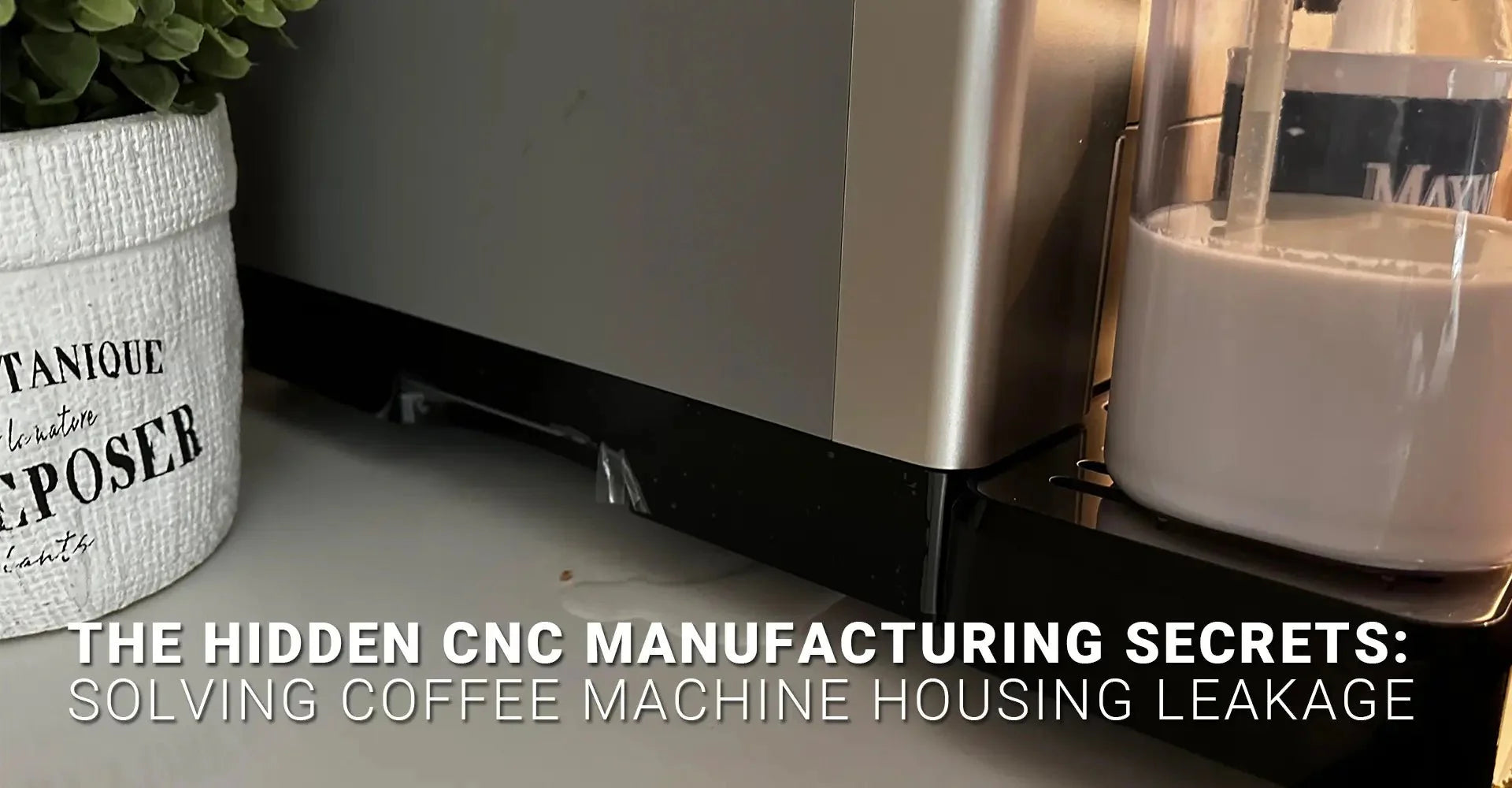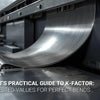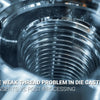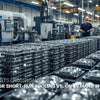How Can Precision Design Stop Your Coffee Machine from Leaking?

How Can Precision Design Stop Your Coffee Machine from Leaking?

Are you tired of finding puddles under your coffee machine every morning? Leakage issues not only create messy countertops but can significantly shorten your coffee maker's lifespan. Behind every reliable, leak-free coffee machine lies precisely engineered housing components that create perfect seals. These components require exceptional manufacturing precision that most coffee enthusiasts never see or appreciate.
The hidden world of coffee machine engineering reveals five critical manufacturing secrets that prevent leakage problems. From precisely machined O-ring grooves to carefully selected sealing materials, these design elements work together to create watertight systems that withstand daily pressure and temperature fluctuations. Understanding these elements can help you choose a better machine and extend its functional life.
Coffee machine housing leakage solutions aren't just about better materials—they involve sophisticated precision sealing design for coffee machines that accounts for thermal expansion, pressure variations, and long-term material performance. Let's explore how modern manufacturing techniques create the leak-free coffee experience you deserve.
Table of Contents
- Why Do O-Ring Groove Dimensions Matter for Leak Prevention?
- What Surface Roughness Provides the Best Seal for Coffee Machines?
- Which Sealing Materials Perform Best Under High Temperature Conditions?
- How Does Dual-Path Sealing Architecture Prevent Leakage?
- Conclusion
Why Do O-Ring Groove Dimensions Matter for Leak Prevention?
The hidden foundation of leak-free coffee machines starts with precision-engineered O-ring grooves. These seemingly simple circular channels must be manufactured with incredibly tight tolerances to create effective seals against pressurized water and steam.
A mere 0.1mm deviation in O-ring groove depth can reduce sealing efficiency by a staggering 40%. This is particularly critical in espresso machines where brewing systems operate at 8-15 bar pressure. CNC machining services that maintain consistent ±0.1mm tolerances are essential for creating these perfect sealing interfaces. Without this precision, microscopic gaps form between components, allowing water to escape over time.
CNC machining tolerances in sealing interfaces represent one of the most critical factors in preventing coffee machine leakage. The milling process must create perfectly consistent groove geometry throughout the entire sealing pathway. While invisible to the naked eye, these precision-engineered channels ensure O-rings compress evenly against mating surfaces. High-quality manufacturing facilities use 5-axis CNC machining centers with real-time measurement systems to verify dimensional accuracy during production. This prevents the common problem of uneven O-ring compression that leads to partial sealing failures and eventual leakage.
What Surface Roughness Provides the Best Seal for Coffee Machines?
Beyond dimensional accuracy, the microscopic texture of sealing surfaces plays a crucial role in preventing leaks. Surface finish optimization for leak prevention is a science that balances several competing factors.
The ideal surface roughness for coffee machine sealing surfaces ranges from Ra 0.8μm to 1.6μm—a sweet spot that optimizes both gasket adhesion and longevity. Interestingly, surfaces smoother than Ra 0.8μm increase production costs by 25% but offer no additional sealing benefits, while surfaces rougher than Ra 3.2μm can cause gasket wear within just 6 months of regular use. The right surface finish creates the perfect balance between mechanical interlocking and reduced friction for silicone O-rings.

Manufacturing engineers must carefully control the surface finishing processes to achieve this optimal roughness range. Too smooth, and the gasket may slip under pressure; too rough, and it creates wear points that eventually lead to leakage. Quality manufacturers use optical profilometers to verify surface texture meets specifications before assembly. This attention to microscopic detail makes the difference between a machine that leaks after a few months and one that remains watertight for years. Proper surface finish optimization for leak prevention extends component lifespan by enabling proper O-ring seating without causing accelerated wear.
Which Sealing Materials Perform Best Under High Temperature Conditions?
Material selection represents another critical element in precision sealing design for coffee machines. The right sealing materials must withstand repeated heating cycles and constant exposure to water without degrading.
FKM (Viton) O-rings maintain elasticity at temperatures up to 200°C (392°F) with only 0.02% compression set, significantly outperforming silicone which begins to lose effectiveness above 150°C (302°F). This temperature stability is crucial in steam-heavy environments found in coffee equipment, where thermal cycling occurs during each brewing session. The right material prevents O-ring hardening and micro-crack formation that eventually leads to leakage.
Material selection must account for both temperature resistance and chemical compatibility with water, cleaning solutions, and coffee oils. While FKM excels in high-temperature applications, EPDM provides superior resistance to certain cleaning chemicals. Manufacturers must match the sealing material to the specific operating conditions of each machine section. Premium coffee machines use different O-ring compounds in various locations depending on the temperature exposure and pressure requirements of each seal. This thoughtful material selection extends O-ring lifespan to 18+ months even in commercial environments with 30+ brewing cycles per day.
How Does Dual-Path Sealing Architecture Prevent Leakage?
Advanced coffee machines incorporate redundant sealing systems to provide multiple barriers against water escape—a technique known as dual-path sealing architecture.
Hybrid sealing designs combining laser-welded joints with compression gaskets reduce leakage incidents by an impressive 70% compared to single-gasket systems. These sophisticated designs undergo rigorous 10,000-cycle pressure tests to verify long-term performance. Dual-path systems compensate for inevitable manufacturing variances and material fatigue that occurs over time.
Modern coffee machine housings often combine multiple materials, including CNC machined metals and plastics, each with different thermal expansion properties. The dual-path approach creates redundancy that accounts for these material differences. If the primary seal experiences stress relaxation over time, secondary sealing elements maintain watertight integrity. Additionally, post-machining treatments like Type III anodizing (25–50μm thickness) can reduce aluminum housing porosity by 90%, addressing microscopic imperfections undetectable through standard quality control processes. These sophisticated coffee machine housing leakage solutions ensure reliable performance throughout the machine's intended lifespan.
Conclusion
Preventing coffee machine leakage requires extraordinary attention to manufacturing details that most users never see. From precisely dimensioned O-ring grooves and optimized surface roughness to carefully selected sealing materials and redundant sealing architectures, these engineering elements work together to create a leak-free coffee experience.
When selecting your next coffee machine, look beyond aesthetics and features to consider the quality of internal components and manufacturing processes. Machines built with precision CNC machining, appropriate surface finishing, high-temperature resistant sealing materials, and redundant sealing systems provide significantly better long-term reliability. Additionally, following manufacturer recommendations for O-ring replacement (typically every 6-12 months for home use or 3 months for commercial applications) will further protect against leakage issues.
Understanding these hidden quality factors helps you make better purchasing decisions and maintain your equipment properly, ensuring years of leak-free coffee enjoyment.
External Resources
[CNC Machining Tolerances in Sealing Interfaces][^1]
[O-Ring Material Selection and Durability][^2]
[ISO 9001-Certified Manufacturing for Sealing Reliability][^3]
[Precision Sealing Design for Coffee Machines][^4]
[Surface Finish Optimization for Leak Prevention][^5]
[Thermal Expansion Management in Housing Design][^6]
---
[^1]: Exploring CNC machining tolerances can help you achieve better sealing performance and prevent leaks in coffee machines.
[^2]: Understanding O-Ring materials can significantly enhance the durability and reliability of your coffee machine's sealing solutions.
[^3]: Learning about ISO 9001 certification can provide insights into quality assurance practices that enhance sealing reliability in manufacturing.
[^4]: Explore this resource to understand how precision sealing can enhance the durability and performance of coffee machines, preventing leaks effectively.
[^5]: This link will provide insights into how optimizing surface finishes can significantly reduce the risk of leaks in coffee machine housings.
[^6]: Learn about strategies for managing thermal expansion, crucial for maintaining the integrity of coffee machine housings and preventing leaks.
-
Posted in
CNC machining





